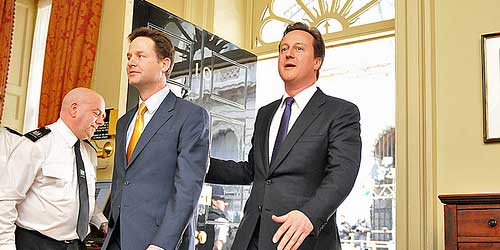Martha Lane Fox’s review of Directgov appears to have taken a slightly wider view than simply how well everyone’s favourite orange website works. Speaking at a conference in Birmingham, Cabinet Office director of digital delivery Graham Walker said:
We’ve been doing a review of Directgov and most of government on the web. We can see that there is a need to massively simplify it, with a lot more rationalisation and to improve the user experience.
Most of government on the web? More rationalisation? I’ve been hearing rumours that Ms LF’s recommendations may include a stronger role for Cabinet Office in departmental / policy publishing, much as it already has (through Directgov) in citizen-facing material. Are we looking at a single super-site for departments?
On a superficial level, that’s a return to the Dark Ages of 1994, when departments used to send floppy disks in the post to Norwich, where someone from CCTA would mark them up into HTML, and FTP them over to the Government Information Service (aka open.gov.uk). It’s also a return to the expensive and ultimately unsuccessful notion of The Club / DotP, which would have seen all departments running on the same (bespoke) CMS as Directgov and DH.
But a lot has changed in the past year or two – and it’s possible to envisage more modern publishing infrastructures, based on a managed multisite approach. You can look at what we’ve done on WordPress for Defra as an example: a centrally controlled environment, with the root level defining aspects like primary navigation and plugin selection, but with a high degree of flexibility and freedom given to the various child sites.
So yes, I can see why such a move would seem desirable – Directgov has been a success, at a very high price of course, and consistency of presentation and UX wouldn’t be a bad thing. (Indeed, I’ve written here previously, in praise of greater presentational consistency.) And yes, I believe it’s now technically realistic, in a way it never was before.
The precedents give plenty of reason to be pessimistic, though.
